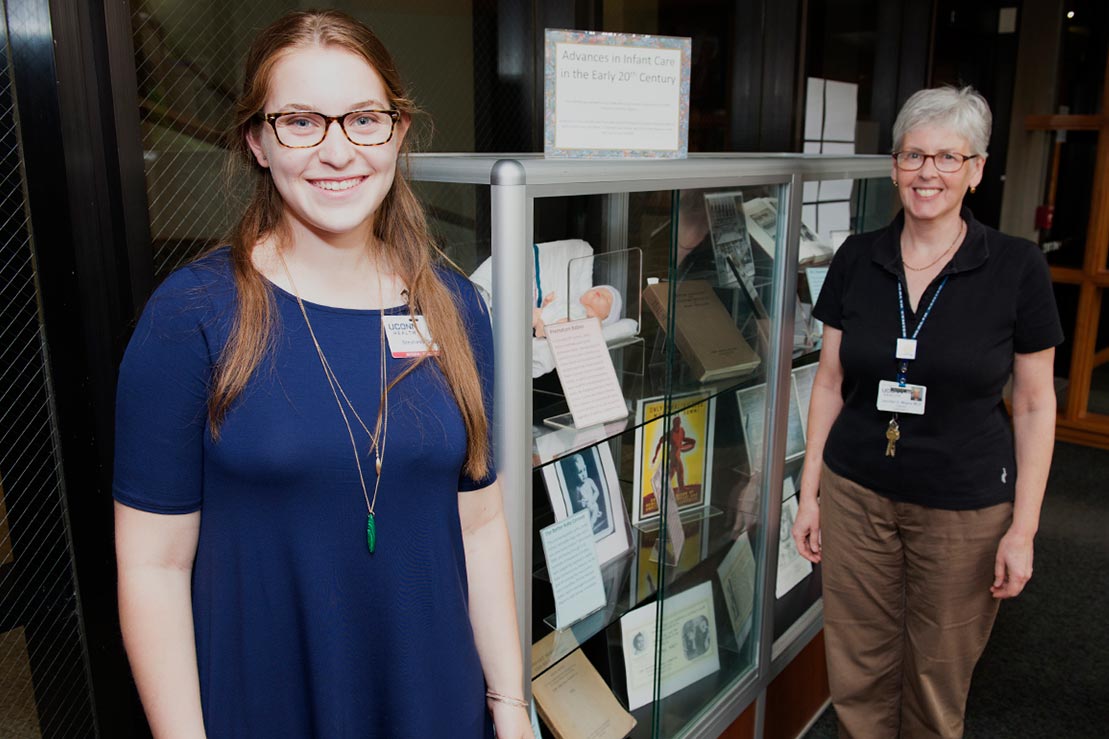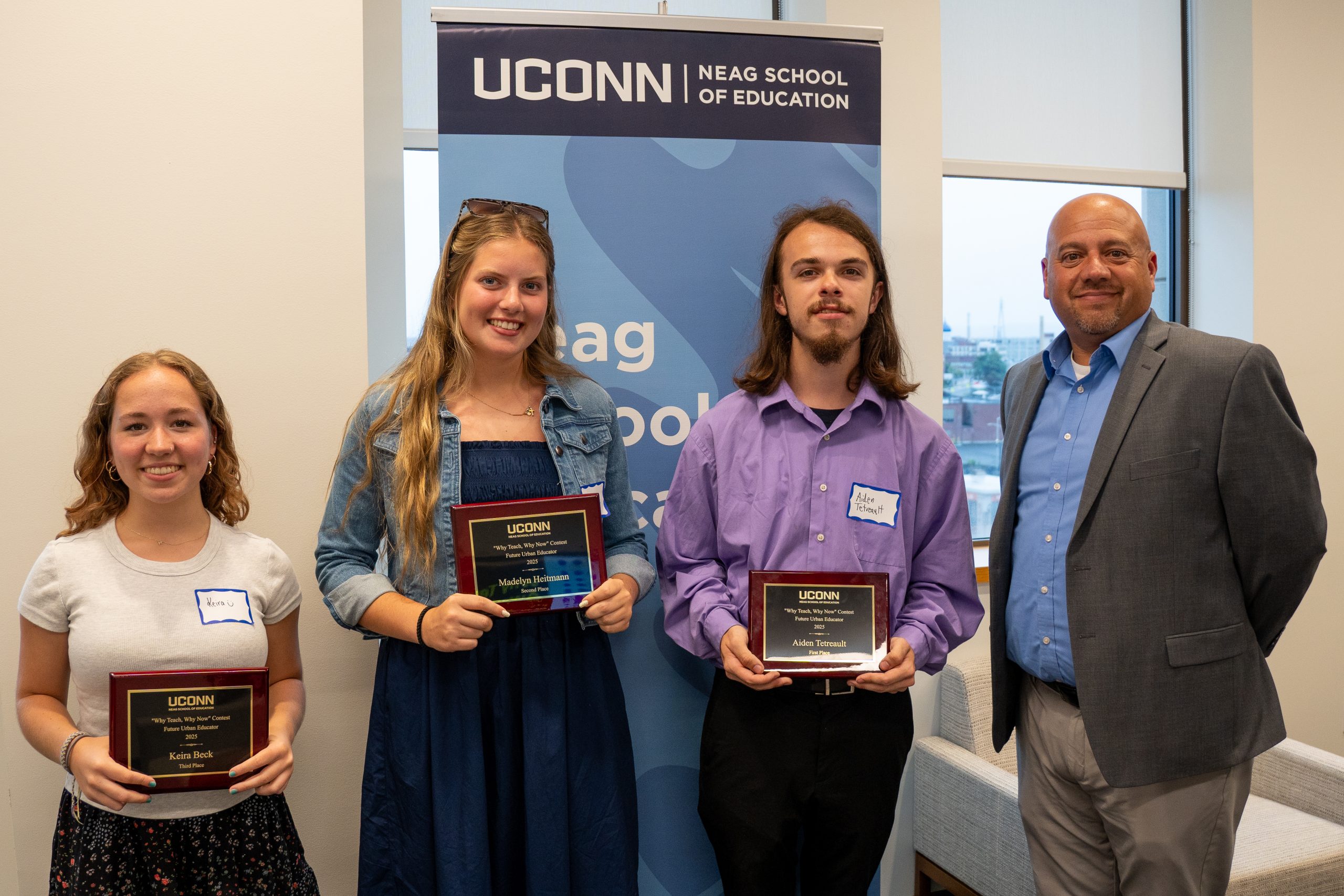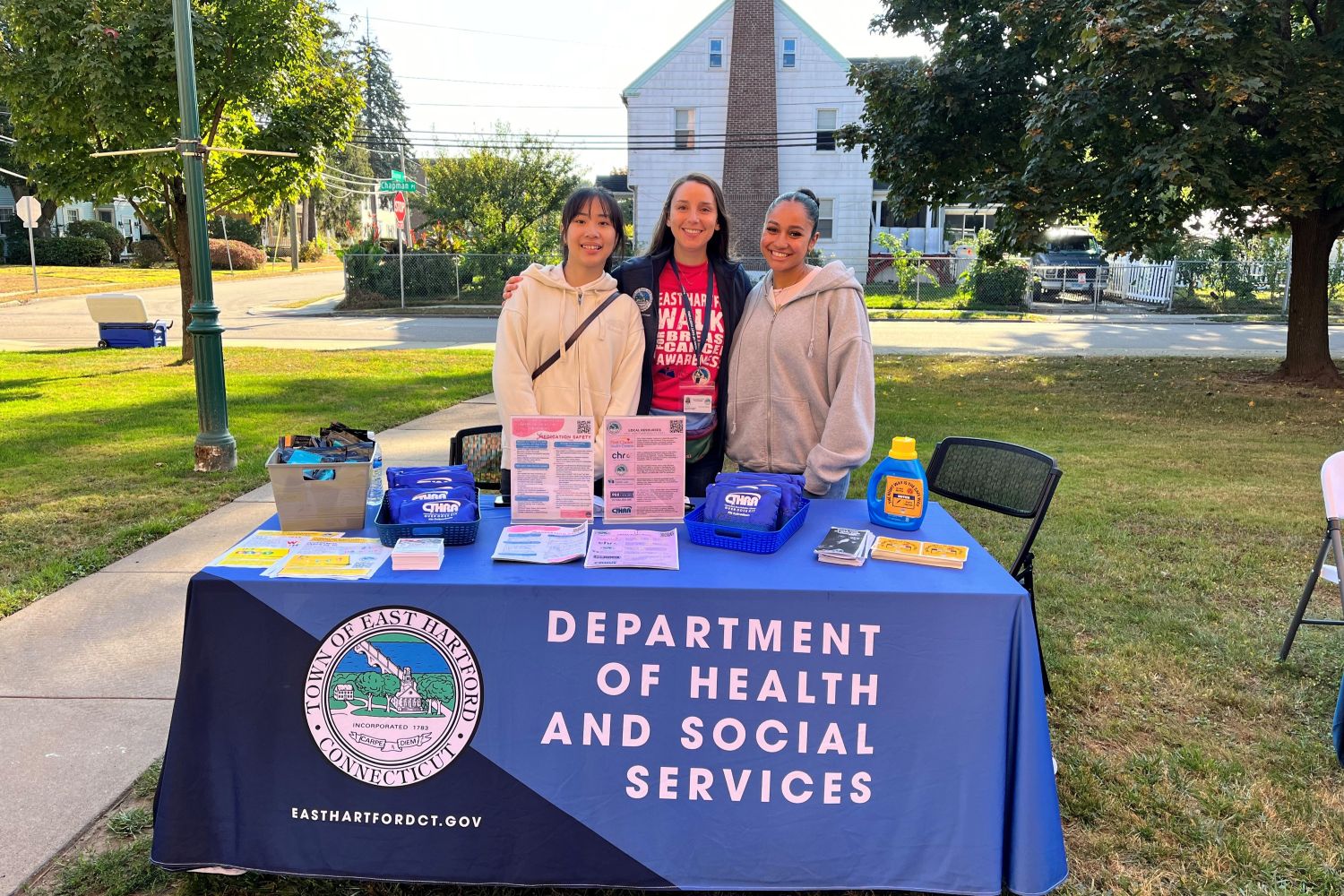If there’s any question about how much infant care has evolved over the last 100 years, a stop at UConn Health’s L. M. Stowe Library will clear it up quickly.
A new exhibit of artifacts from the Hartford Medical Society Historical Library, which is housed in the Stowe Library, tells of the challenges of getting healthy milk, prevailing beliefs about human breeding that would be considered offensive today, and the circus-like ancestry of neonatal intensive care in the U.S.

Librarian Jennifer Miglus had those three concepts in mind and enlisted the help of her intern, Stephanie Gold, to create “Advances in Infant Care in the Early 20th Century.”
“Stephanie was the answer to my prayers,” Miglus says. “I basically showed her what I was thinking, and she did a lot of the research. She really wrote up the copy and she laid out all of the exhibit.”
To Gold, the most fascinating of the exhibit’s concepts is the one on premature infants. It describes a time before hospitals had neonatal intensive care units, when babies born premature instead ended up in incubators on display as a Coney Island attraction in Brooklyn, New York. While many at the time viewed it as a sideshow, many others credit creator Martin Couney with saving several thousand babies in his facility, where he employed a pediatrician and a staff of nurses and wet nurses. While he did charge admission for patrons to enter the Infant Incubator to observe the babies in this environment, he provided the care at no cost to the parents.
“It’s strange in today’s world to think about premature babies being regarded as subjects of sideshows,” Gold says. “I also found it very interesting that Couney’s incubators were rejected by the medical community at the beginning of his career, but eventually his style of care for premature babies was implemented in hospitals worldwide and ultimately helped pave the way for the modern-day NICU.”

The exhibit, on display just inside the library’s entrance, also includes information about the eugenics movement and “better baby contests” that were prevalent in the first few decades of the 20th century. A popular belief at the time was humans could produce genetically superior offspring by controlling who reproduced based on “desirable” characteristics. This thinking fell out of favor during the rise of Nazi Germany.
The other component of Miglus and Gold’s project tells of rampant infant mortality tied to an unreliable supply of healthy milk, particularly in New York in the mid-to-late 19th century. Sickly cows produced milk that was impure, contaminated or otherwise toxic, often the result of feeding on distillery waste. It led to the establishment of the New York Milk Committee, which in the early 20th century started a campaign to open New York Health Department milk stations and educate mothers about the importance of pure milk, nutrition, and hygiene.
Gold is an undergraduate who is transferring into Boston University this fall after two years at Muhlenberg College in Allentown, Pennsylvania. She is a double major, in chemistry and art history, and aspires for a career in the science of art restoration and conservation.
She splits her time as a summer intern at UConn Health working with Miglus in the Hartford Medical Society Historical Library and with the Office of Logistics Management, where she helps curator Linda Webber maintain UConn Health’s art inventory. She says her biggest takeaway from her experience here is the art of research.
“Developing and practicing good research habits is very important to me in both the natural sciences and the arts,” Gold says. “Whether it’s the primary resources from the Hartford Medical Society Historical Library collection or secondary resources online, learning how to research and how to evaluate the credibility of your resources is a practice that will always be important.”
Her next project with Miglus is uploading documents into the Connecticut Digital Archive, a task that will continue beyond Gold’s return to school.
“I think she’s very easy to work with and just super bright, so she gets stuff really quickly,” Miglus says.



